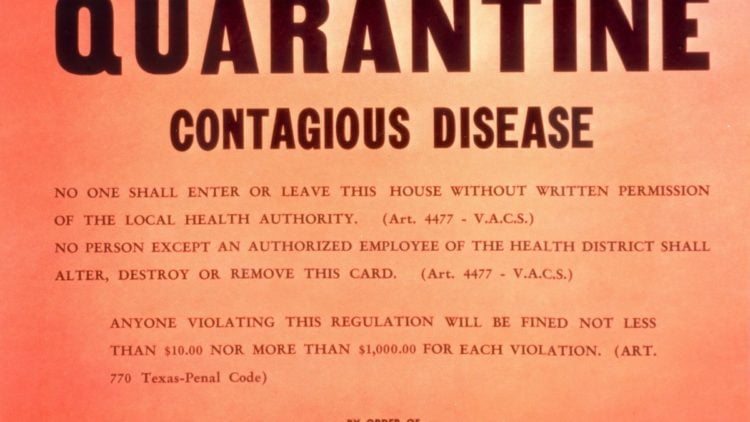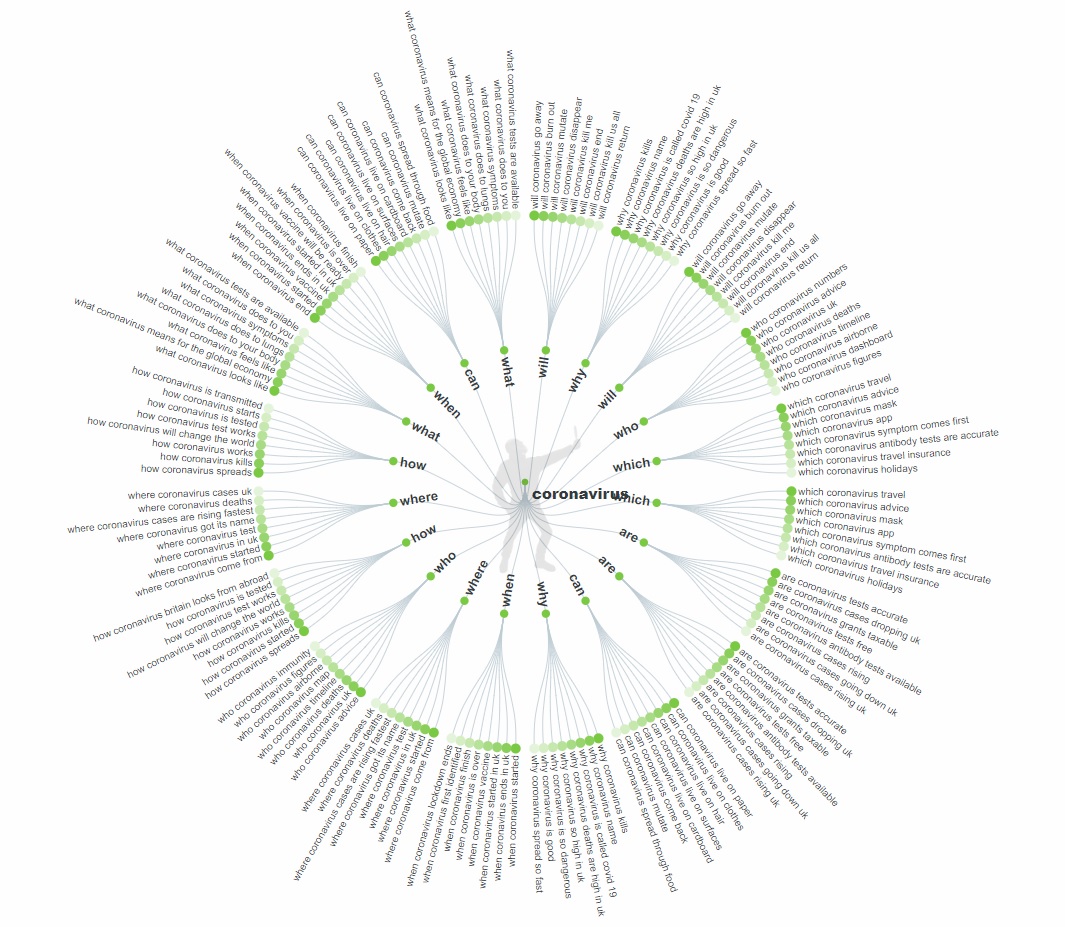
Getting Reliable Search Data In A Crisis
I don’t really need to remind you that the Coronavirus outbreak has had an enormous impact on all our lives and led to unprecedented sweeping changes in the way we do things, but I had to lead with something. Those changes are the main reason for my writing this post, so it would have been weird not to acknowledge them.
Not just our lives, but our outlooks, needs and concerns have dramatically shifted since the start of 2020. What we can and can’t do is completely new and constantly changing. Meanwhile, entire industries have seen massive upheaval, mostly for the worse, although not always. I’m not qualified to comment or speculate on what this means for the economy or society as a whole, so I won’t. One area I can talk about the impact this change has had, though, is people’s online search behaviour. Not the most major concern for most of us right now, I agree, but an important bellwether for those businesses that have been hit by the effects of lockdown.
Normally, when I analyse search behaviour for a client, I look for trends; both year-on-year and seasonal. For year-on-year, I’m looking at where demand has been growing (or declining) over the last few years and trying to identify emerging or healthily blooming search behaviours. For seasonal trends, I look for when, in an average year, people are most likely to be looking for things like holiday destinations, new underwear or chocolate eggs (that last one may seem obvious but you should always back up your hunches with data).
But 2020 is in no way an average year.
Looking at how people searched in June 2020, relating to pretty much anything, and comparing it with June 2019 is pointless. Crises happen all the time, unfortunately, but they don’t usually have such a visible effect on how we go about our daily lives, and that includes searching online. This particular crisis has hit the reset button on our day-to-day existence. Our concerns about what we buy, where we can go and who we interact with are so different this year that you can’t draw a line back to this month last year and expect to make any sense of it. Announcements are made on an almost daily basis that trigger more changes in our behaviour. This makes it very hard to say with any accuracy what people are likely to be searching for in a month, a week or even tomorrow.
So how do we give our clients useful information and advice in this situation? There are a couple of different approaches that, when combined, can help us get data that is at least helpful.
Act Like 2020 Hasn’t Happened
Okay, so this already sounds like bad advice. But I don’t mean go and hide under the bed until it’s all over, or walk through the world with a big grin pretending everything is just peachy. All I’m trying to say is that, because data from 2020 is incomparable with 2019, or any other year in recent memory, don’t use it.
If you’re using a tool like Google’s Keyword Planner to look at search volumes and find trends and seasonal changes in demand, look at previous years’ data and extrapolate what “normal” probably would have looked like this year. Keyword Planner will give you data going back four years from the most recent month it has data for. At the moment, that means you can look at all of 2017, 2018 and 2019; that’s plenty of data to see what a typical year looks like and to see how demand was increasing over time.
Of course, you shouldn’t completely ignore reality. None of us know when things will go back to normal, or even if they will be the same again. Some industries, like travel, hospitality and live entertainment, have been severely impacted by the crisis, while a few, like food delivery and online retail, have had an unexpected boom. There’s no telling how long a recovery, or a downturn, might take or when it will even begin. But looking at what was normal before COVID-19 can still give us a picture of people’s wants and needs – it will take more than a global pandemic to change those.
Looking at year-on-year data from before 2020 can help us to map out expected seasonal shifts in search demand. As we get more data from this year, we can compare it with what we expected and make more calculated judgements based on how right or wrong those expectations were.
Ignore the Past Completely
If the data from this year can’t be compared with others, then don’t. Look at what’s happening right now and go from there.
To do that well, we need to look beyond tools like Keyword Planner. Historical data is great, but in a time when the word “unprecedented” has never before been used so often and so accurately, it’s just that – historical. Knowing the average monthly search volume for a query is very useful when looking at long periods of time, but not so much when you’re trying to find out what’s happening right now. For that, you need to look at other tools that give you something a bit fresher.
Google Trends has always played second fiddle to Keyword Planner when it comes to keyword research, but now its ability to show emerging trends in search behaviour almost as soon as they happen is invaluable.
As an example, this Trends graph shows search interest in “hairdresser” in the UK over the last twelve months:

As you would expect, there was a drop in searches after lockdown was announced in mid-March, and then a big spike in recent weeks after it was confirmed they would be allowed to reopen in the UK from the 4th of July (the bump in interest in May occurred immediately after Boris Johnson said they wouldn’t be allowed to open any earlier than that date).
It’s important to note that the range on these graphs, which always goes from 0 to 100, doesn’t represent search volume or a percentage of anything. It’s a logarithmic “score” to show when search demand was highest over time. So, while the most recent data shows demand for “hairdresser” over the 5th to the 11th of July at 100, if demand continues to increase, the score for that date range will go down as the next one is scored at 100, and so on. The peaks, troughs and trends on these graphs are what’s useful here, rather than the numbers.
You’ll get more useful trending data from more generic terms in Google Trends – the sort of queries that would normally have high search volumes in Keyword Planner. But it’s also useful for comparing queries to see which is the most popular at the moment, and for suggesting “breakout” searches that are emerging trends; terms which may have little to no historical search demand but are suddenly in vogue. For example, the top five breakout terms relating to “hairdresser” this week were:
- hairdresser coronavirus
- hairdresser reopening
- mobile hairdresser coronavirus
- hairdresser opening uk
- hairdresser reopening uk
Nothing especially surprising in that lot, but checking these emerging queries can often give you some great insights into what the public are currently looking for and how they are looking for it.
For diving down into the more niche, “long tail” types of queries that can really give you a picture of what people want right now, Answer the Public is a great tool. What makes it really handy for this type of research is that it’s based on recent Google searches, so it taps right into the questions and concerns that are currently on people’s minds. That can really inform your copy, whether you’re creating new content or updating existing pages.
As with Trends, it’s best to start with a generic term of just a word or two. Answer the Public will give you back a list of searches that have been made recently using that term, split into questions (“can hairdressers go back to work”, “where to buy hairdresser scissors”), prepositions (“hairdresser near me”, “hairdresser with mask”), comparisons (“hairdresser or stylist”, “hairdresser vs barber”) and anything else not covered by those categories. These can all be displayed in fantastic-looking wheels, which are great for presentations, or easier-to-read lists.

Because there’s no limit to how a human being can search, you’re likely to find a lot of weird stuff that isn’t relevant. But amongst that, you’re sure to find real nuggets and maybe some surprises. A lot of the questions and phrases will be quite similar too. This is another reason to avoid search volumes when looking at this kind of thing; people can ask the same question in many different ways, and tools that look for the sheer volume that a specific word or phrase has been searched for don’t allow for that. Look for commonalities. If a lot of people are asking similar questions around a topic, having a good piece of content that answers those questions clearly will satisfy both them and the search engines.
Do Both
The best approach is to combine both of the above methods. If you gather data on what you’d normally expect to see in a “normal” year, then drill down into what’s actually happening in the short term, you can really start to formulate insights. You can also make less risky predictions about how people will be searching, at least in the near future.
Change really is constant at the moment. I don’t doubt you’ve already had to make multiple changes to your site’s content relating to the pandemic and the various changes in lockdown rules. There are very likely to be more. Doing a little bit of keyword research on a regular basis can help you to format these changes in the best way to get it in front of as big an audience as possible in search.
Just don’t ask me what the biggest shopping trends will be this Christmas. That’s way too far in the future…



